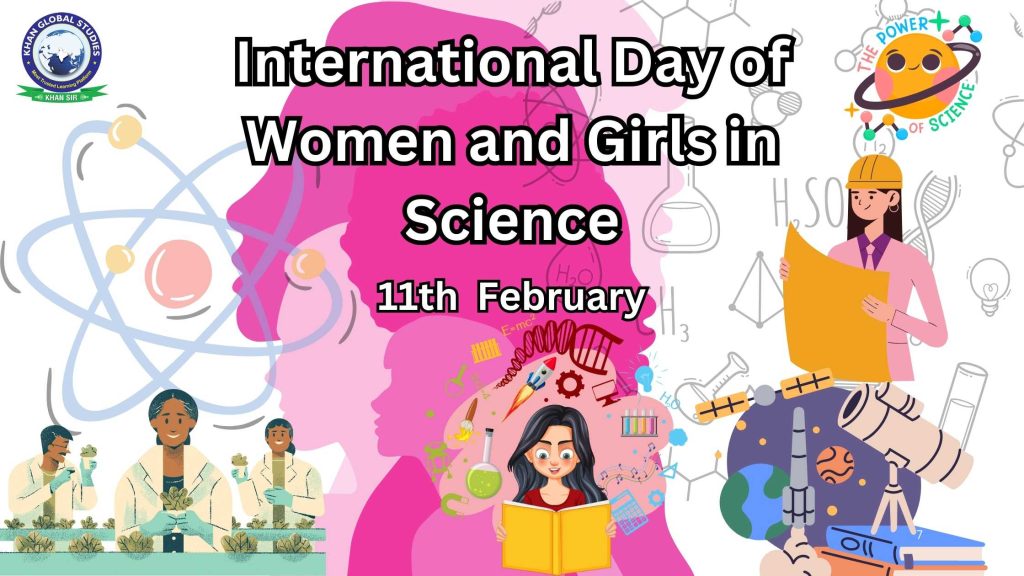The International Day of Women and Girls in Science is an annual observance adopted by the United Nations General Assembly. Its purpose is to promote the full and equal participation of women in the fields of science, technology, engineering, and mathematics (STEM). The United Nations General Assembly passed Resolution 70/212 on December 22, 2015, declaring February 11 as the official day for this observance. Each year, a specific theme is chosen, focusing on gender equality in science and the role of women in scientific fields.
Observance and Participation
This day is jointly implemented by UNESCO and UN Women. These organizations collaborate with national governments, intergovernmental organizations, universities, civil society, and private companies to encourage the participation of women and girls in STEM fields.
Women’s Participation and Challenges in Science
The participation of women in scientific and technological fields remains lower compared to their male counterparts. Between the 1960s and 1980s, the number of women obtaining degrees in science and engineering increased in American universities, but this growth stagnated after the 1980s. A 2013 study conducted in the UK found that there had been no significant change in the participation of women in STEM fields.
Social Barriers
Several social barriers affect the participation of women in STEM fields, such as:
- Family expectations and domestic responsibilities
- Early marriage
- Discrimination in the labor market
- Lack of career growth opportunities
- Lower encouragement for women in scientific subjects
These challenges are particularly severe in regions like Africa, South Asia, and the Caribbean. A 2013 study also found that in science, especially physics, girls receive less encouragement from their teachers, families, and society.
Regional Variations
The status of women’s participation in STEM fields varies across different regions. For example:
- United States: Women’s participation is limited due to low enrollment rates and a lack of interest in science education.
- Arab countries: The enrollment rate of women in science is 60-80%, but their participation in STEM careers remains restricted due to career and social barriers.
United Nations Recognition
The United Nations General Assembly, through Resolution 70/212, passed on December 22, 2015, declared February 11 as the “International Day of Women and Girls in Science.” This resolution urged all member states, organizations, and the private sector to promote awareness campaigns and educational activities to provide equal opportunities for women in science.
While declaring this day, the United Nations also referred to its previous resolutions, including:
- The United Nations 2030 Sustainable Development Agenda (Resolution 70/1), which prioritizes quality education and gender equality.
- Resolution 68/220, which recognizes that women’s participation in science, technology, and innovation is essential for gender equality and women’s empowerment.
Role of Women in Scientific Leadership
- Diversity and Innovation
- Diversity in scientific research fosters creativity, innovation, and new discoveries. The inclusion of women and girls in STEM expands the talent pool and provides new perspectives to address global challenges. However, gender inequalities persist, limiting opportunities for women to advance into scientific leadership roles.
- Statistics on Women’s Participation in STEM
- Women make up only 33.3% of researchers worldwide.
- Only 12% of members in national science academies are women.
- In the field of Artificial Intelligence (AI), only 22% of professionals are women.
- Women account for 28% of engineering graduates and 40% of computer science graduates.
- Women scientists typically receive smaller research grants and have fewer opportunities for leadership roles.
Measures to Increase Women’s Participation in STEM
- Improving Early Education
- Promoting STEM-focused educational programs.
- Encouraging girls to develop an interest in science.
- Highlighting inspirational stories of women scientists.
- Improving the Workplace
- Implementing equal pay and merit-based promotions.
- Encouraging flexible work schedules to accommodate family responsibilities.
- Enforcing anti-discrimination policies in workplaces.
- Women’s Participation in Leadership Positions
- Providing scholarships and research funding for women in science.
- Promoting networking opportunities for women scientists.
- Showcasing successful female scientists as inspirational role models in STEM.
Conclusion
Promoting women’s participation in science and technology is essential for sustainable development and innovation. By fostering gender equality in STEM, we can accelerate scientific discoveries, boost economic growth, and create a more inclusive and sustainable future. The International Day of Women and Girls in Science is a significant step in this direction, encouraging the global scientific community to recognize and appreciate women’s contributions in STEM.





